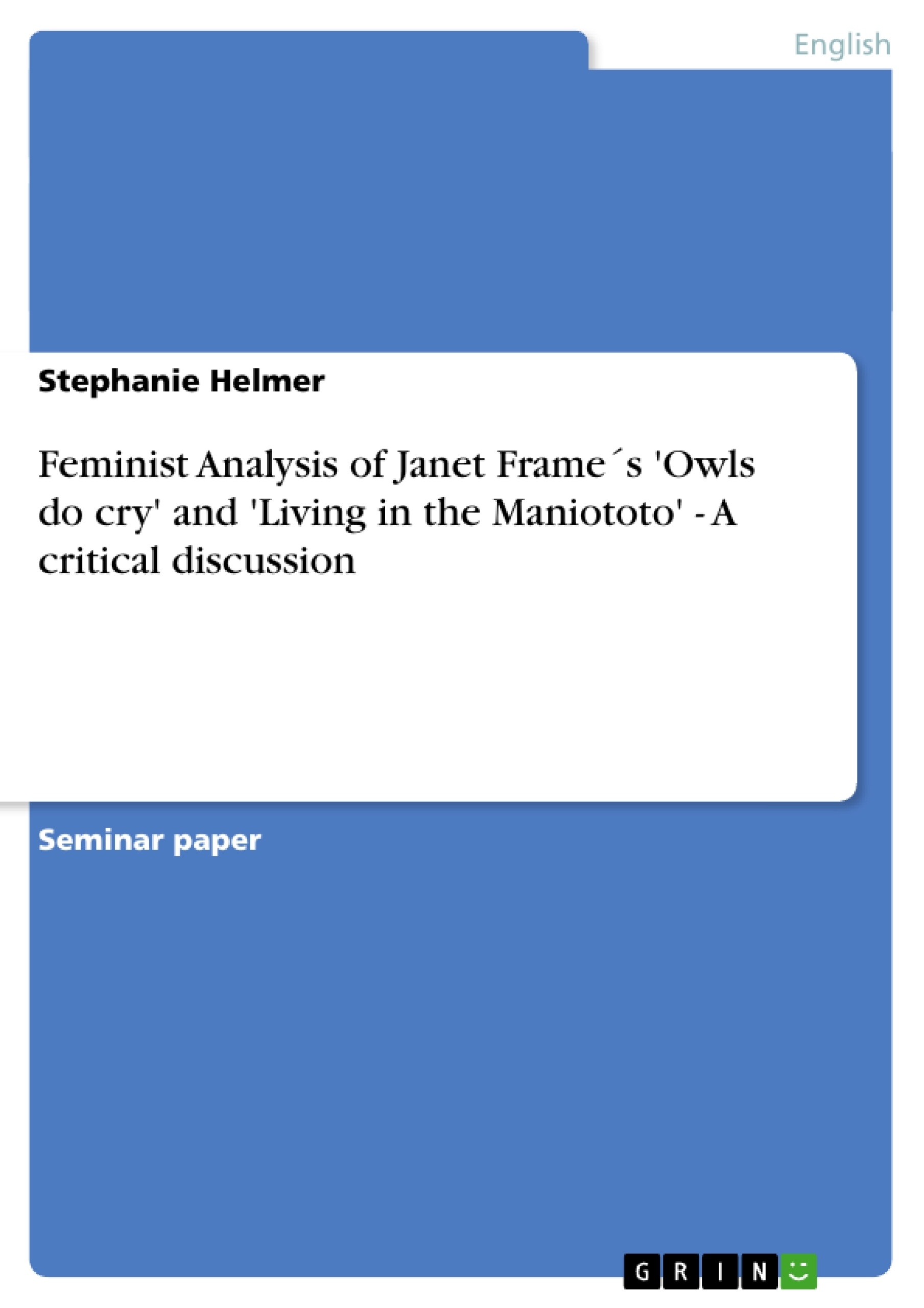Focusing on gender as a fundamental category of analysis makes it necessary to have a look on either side, on women as authors and women as readers. It cannot be denied that female authors have another relationship to their language, they have different vocabulary and use it in different kinds of sentences than their male colleagues. For years, this has been the reason, why women´s writing has always been regarded as naiv or intuitive, hence it were masculine norms which were used as traditional generic classifications.
It was not until the feminist movement, that women´s writings were not undervalued any longer. The women fighting for their suffragette had become aware of the dangerous stereotypes, which male authors described in their books, and the resulting misrepresentation of female life and work.
Consequently, it became necessary to develop an alternative scheme of literary criticism, in which social ideologies and practices are addressed as well as is the way, those ideologies and practices form women’s writing.
Unfortunately, the first feminist critics adopted merely the maxims of male literary criticism and looked at texts with a female perspective; they re-examined male texts which showed the way women were often represented according to social, cultural and ideological norms, eager to find female images, stereotypes and misconceptions. The fact that complex texts permit a variety of alternative readings and interpretations was simply neglected. The early feminist critics were thus on the same one-way-road as had been their male counterparts for many years, and confronted with the issue of reconciling the pluralist approaches.
However, the second-wave feminism of the 1960s won feminist criticism more recognition and women writers like Virginia Woolf, Kate Millett or Margaret Atwood made literary criticism an integral part of the feminist struggle, offering a multiplicity of feminist approaches. Hence, it is not only the text which is investigated in, but also the female authors who have become the subject of further investigation. The focus now is put on the study of women as writers, their personal history, their individual styles, themes, genres and structures. In order to grant a more thorough differentiation, modern feminist criticism is built on four main pillars: the study of biological, linguistic, psychoanalytic and cultural differences as opposed to male writing.
Inhaltsverzeichnis (Table of Contents)
- INTRODUCTION
- 1.1 ON FEMINIST ANALYSIS
- FEMINIST ANALYSIS OF JANET FRAME'S OWLS DO CRY AND LIVING IN THE MANIOTOTO
- 2.1 BIOLOGICAL ASPECTS: THE USE OF FEMALE IMAGES
- 2.2 LINGUISTIC ANALYSIS: LEAVING THE PROTECTIVE WOMB
- 2.3 PSYCHOANALYTIC ANALYSIS
- 2.4.1 CULTURAL BACKGROUND
- 2.4.2 SCRUTINISING J.FRAME'S CULTURAL BACKGROUND
- FEMINIST LITERARY CRITICISM IN THE FUTURE
Zielsetzung und Themenschwerpunkte (Objectives and Key Themes)
This seminar paper aims to conduct a feminist analysis of two novels by Janet Frame: Owls Do Cry and Living in the Maniototo. It explores the various ways in which Frame uses female imagery and linguistic strategies to express the challenges faced by women in a patriarchal society.
- The role of female imagery in conveying themes of protection, vulnerability, and societal constraints
- The use of language to explore the silenced voices of women and their experiences
- The impact of cultural and societal norms on women's lives and their representation in literature
- The development and evolution of feminist literary criticism
- The significance of Janet Frame's work within the context of postcolonial fiction
Zusammenfassung der Kapitel (Chapter Summaries)
The introduction defines feminist analysis and its significance in understanding women's literature. Chapter 2 delves into the biological, linguistic, psychoanalytic, and cultural aspects of Frame's writing. The biological analysis focuses on the use of female imagery, particularly in Owls Do Cry, where the imagery of a protective womb and the threat of the outside world are explored. The linguistic analysis examines the ways in which women's voices are silenced and how Frame utilizes imagery, circumlocution, and euphemisms to express their experiences. The chapter also discusses the cultural background and its influence on Frame's work.
Schlüsselwörter (Keywords)
This seminar paper explores key terms and concepts related to feminist literary criticism, including: female imagery, linguistic analysis, psychoanalytic analysis, cultural background, Janet Frame, Owls Do Cry, Living in the Maniototo, postcolonial fiction, and women's writing. The focus is on analyzing the representation of women in literature and the ways in which their experiences are portrayed.
- Citation du texte
- Stephanie Helmer (Auteur), 2000, Feminist Analysis of Janet Frame´s 'Owls do cry' and 'Living in the Maniototo' - A critical discussion, Munich, GRIN Verlag, https://www.grin.com/document/41164



